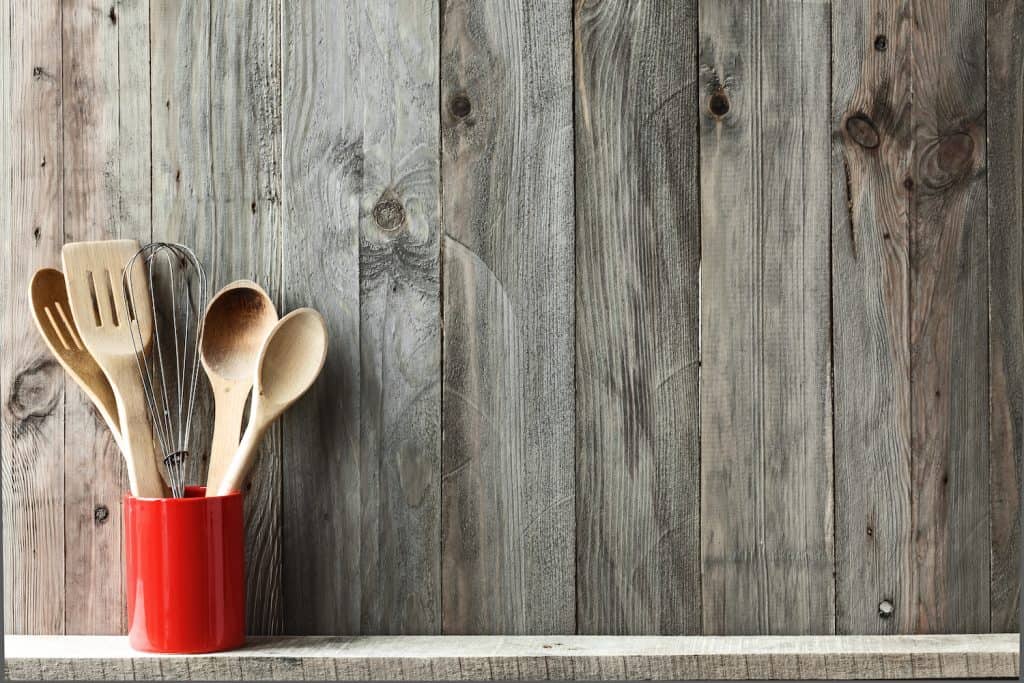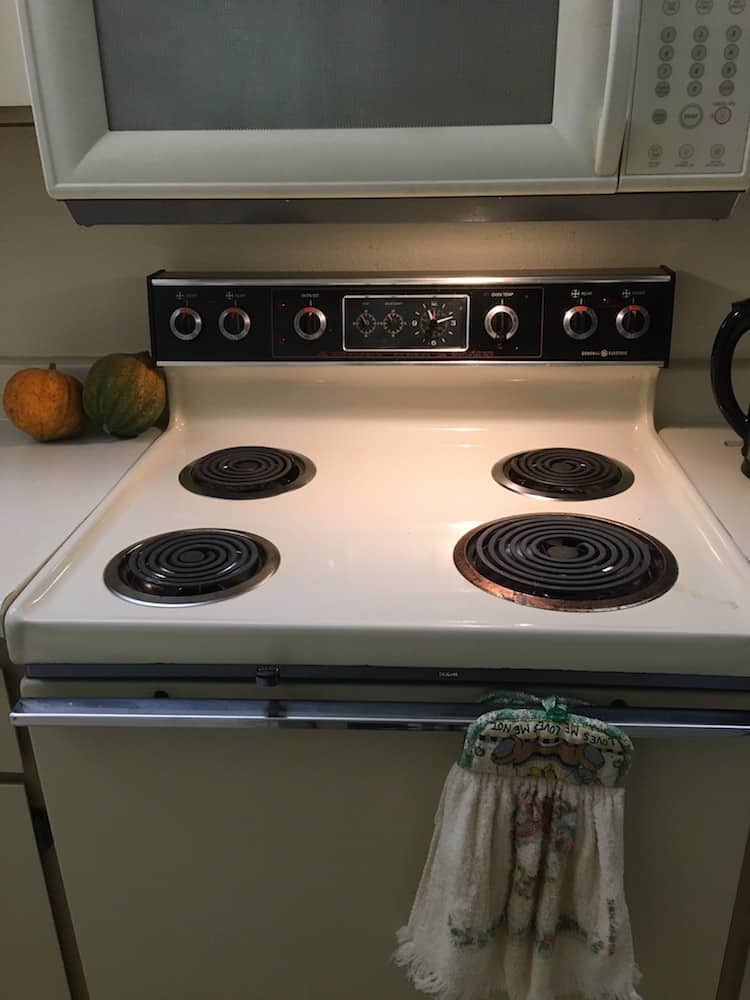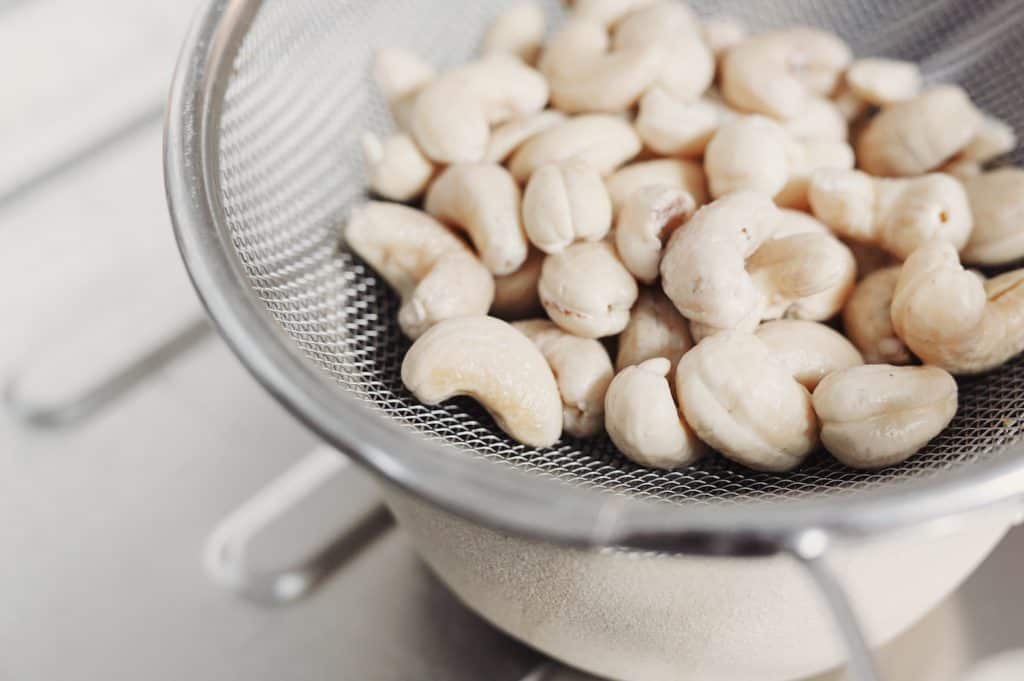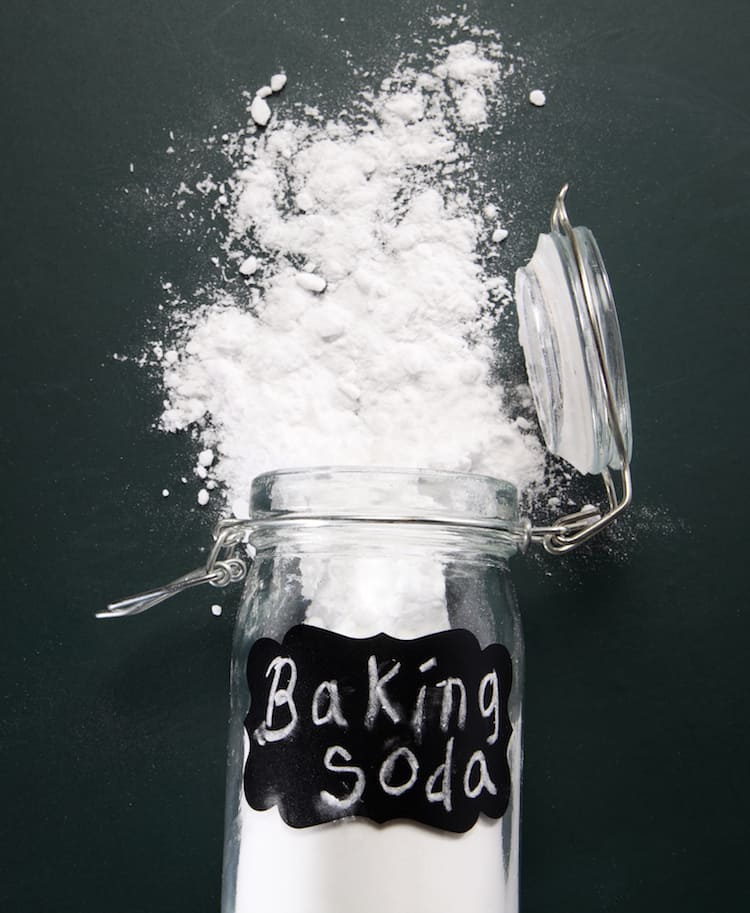
Have you ever read a super-good-looking recipe, and then looked up at your kitchen to see how small, basic, and sad it is?
I get it. I’m in my 20s, living in an apartment, and my kitchen is what you might consider basic af. While I’ve been slowly investing in some good kitchen tools, ultimately, I don’t have the professional tools that they have on baking shows. Case in point:

- I don’t have half as much counter space as I would like
- Half our “kitchen supplies junk drawer” is cheap stuff from Target
- My oven is from 1987 (aka the year my parents got married. It has an analog clock and everything. Vintage!)
- Sometimes I think my microwave is haunted
You know, just little things like that. It’s fine. We live with it. (Please don’t kill me, microwave ghost.)
So what are you, an aspiring amateur baker, to do when your kitchen is tiny, and you don’t have all the fancy tools and counter space to make your life easier? Should you go out and buy a bunch of random kitchen stuff?
Not unless you really want to.
Kitchen tools can make your life easier, but they can just as easily clutter up your already small kitchen. So only invest in them if you know you’re going to be using them frequently. But you can certainly make delicious food, no matter how basic your kitchen is.
Here’s some tips I’ve found while baking in my tiny apartment kitchen.
1. Choose multipurpose tools when buying new kitchen equipment
When it comes time to buy new tools, you might be overwhelmed by all of the options out there. As it turns out, there’s a tool out there for every possible use. An herb chopper. A citrus juicer. Even a banana cutter that will cut your bananas into perfectly even pieces.
But unless you know you’re going to make fresh pesto every week or put bananas on your cereal every morning, these items tend to be pointless clutter.
It’s often a better use of your money to purchase a really good knife and learn how to chop these things efficiently by hand. (It also means fewer dishes when it comes time to wash up!)
If in doubt, I’d always recommend purchasing kitchen equipment that can serve multiple purposes. A doughnut pan can only really bake doughnuts, but a muffin tin can make muffins, mini tarts, small deep-dish pizzas, peanut butter cups… all sorts of delicious things.
These multipurpose pieces of kitchen equipment won’t end up being clutter because you’ll be using them so frequently.
Again, it’s all down to what you use the most in your kitchen, and my favorites may not be of any use to you.
2. Get creative with tool use and understand shortcuts.
One of the best things about learning to cook is watching your creative confidence flourish in the kitchen. Once you learn the basics, it’s easy to experiment and start putting your own twists on things.
When your kitchen is basic, you might need to employ that creativity to make your life easier. Here’s some examples!

A lot of creamy vegan recipes use cashews. But if you’ve got a cheap blender, it can be a pain to get things totally smooth. Most recipes do mention this, but soaking cashews is a great shortcut to soften your cashew so that you don’t need to run your blender for half an hour.
Making cookies but you’ve realized you don’t have any cookie cutters? You can use the rim of a drinking glass to cut out circles.
Making pie crust but you realize you don’t have a rolling pin? A wine bottle will work in a pinch. (I have actually used this trick myself! I was traveling and really wanted vegetable pot pie for dinner.)
With a little bit of creativity, you can overcome any obstacle in the kitchen.
3. Make Google your friend
You probably already know this if you’re a citizen of the 21st century. But Google is your friend when you’re confused about something. Chances are, someone else has asked your exact same question.
What spices are in pumpkin spice blend, and can I make it myself?
Can I substitute for Worcestershire sauce? (Also, how the hell do you pronounce “Worcestershire”?)
What is 200º Celsius in Fahrenheit?
Knowing the answers to your questions will help you become a better, more inquisitive baker. Take your time to really understand what it is you’ve just asked Overlord Google, and eventually, you’ll also become a more intuitive baker.
4. Substitute
It’s not just tools that clutter up your life. It’s also the random ingredients you buy along the way. If you’re a vegan who frequently cooks and bakes from scratch, you’re gonna end up with a lot of random crap. Tapioca starch! Garam masala spice! Fancy flaked sea salt!
While following a recipe to the tee will give you the results you want, part of being a good vegan scientist is learning that substitutes can work just as well. This is especially important if you live in a small place and are not keen on cluttering up your kitchen.
Just understand what the function of your ingredients are, and you can likely replace them with things you already have!
An example: your recipe needs tapioca starch, but you don’t have it? Well, tapioca starch’s function is to thicken things up. Another starch, like corn starch, will work just as well. Flour might work too, depending on what it is you’re baking.
Another example: spice blends like taco seasoning, garam masala, and pumpkin spice are combinations of other spices – spices with multiple uses. To save money and space in your kitchen, it’s super easy to make your own versions of these spices. Just look online for recipes.
5. Learn what can’t be substituted

Having said that, not everything can be substituted. If you’ve been a vegan for some time, you probably know that flavor is everything in vegan food. It’s the spices, sauces, and textures that really make a dish pop and make it exciting to eat.
If you’ve been baking for a while, you know that something like baking soda can’t really be replaced in a baked good without disastrous results.
But there’s other things you should invest in that aren’t so obvious.
An example from my own kitchen: my mom frickin’ loves pad thai. It’s not a stretch to say that she likes it more than she likes most people.
But we always struggled to make a great-tasting pad thai at home. The recipes we tried tasted good, sure, but not amazing. Until we found The Recipe. It turns out that the secret we were missing was tamarind paste.
This is a sticky paste made from the pod fruits of the tamarind tree. It tastes tangy, and it’s used in a variety of cuisines.
We’d never heard of it before, but we went ahead and bought it to try out. It was an excellent purchase. We now make The Recipe several times a month, and we’ve made other recipes using tamarind paste too.
So basically, don’t be afraid to buy interesting new ingredients to try them and play around with them. Life is short, and you’ll never know what you’ll end up loving.
6. Scale recipes down.
It sucks seeing food go to waste if your household is just you and your partner/roommate/mom/your very polite dog Gerald who sits at the table and eats bread like a true gentleman.
But if you’re in a small kitchen with an equally tiny refrigerator, it’s hard to store leftovers from a big meal. Sigh!
So if you want to bake a recipe that’ll turn out to be a whole kilogram of bread, or 50 cookies, put your fourth grade math skills to use and use the power of fractions to cut recipes in half.
This has the added benefit of allowing you to practice baking more often, as you won’t be eating the same stale leftovers for a few days!
7. Learn your oven.
Let’s face it. If you’re renting, if you live in an older home, your kitchen appliances might not be the best or newest out there. They might have some… quirks.
As mentioned before, my own oven will be 34 years old this year. It bakes well, but I’ve found that I usually need to leave things in for a few more minutes than most recipes call for.
Pay attention to your own oven when you’re baking. Does it bake things evenly, or does it tend to cook things unevenly? Does it tend to bake faster or slower than most recipes call for?
Knowing this will help you budget your time more efficiently and help you master baking in even the most basic of kitchens.

Leave a Reply
You must be logged in to post a comment.